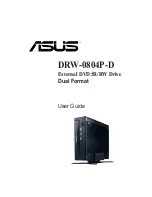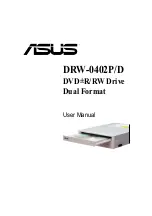
RS-485 Communication Features
350
7.2 Communication System Configuration
In an RS-485 communication system, the PLC or computer is the master device and the
inverter is the slave device. When using a computer as the master, the RS-232 converter
must be integrated with the computer, so that it can communicate with the inverter through
the RS-232/RS-485 converter. Specifications and performance of converters may vary
depending on the manufacturer, but the basic functions are identical. Please refer to the
converter manu
facturer‘s user manual for details about features and specifications.
Connect the wires and configure the communication parameters on the inverter by referring
to the following illustration of the communication system configuration.
7.2.1 Communication Line Connection
Make sure that the inverter is turned off completely, and then connect the RS-485
communication line to the S+/S-/SG terminals of the terminal block. The maximum number
of inverters you can connect is 16. For communication lines, use shielded twisted pair (STP)
cables.
The maximum length of the communication line is 1,200 meters, but it is recommended to
use no more than 700 meters of communication line to ensure stable communication.
Please use a repeater to enhance the communication speed when using a communication
line longer than 1,200 meters or when using a large number of devices. A repeater is
effective when smooth communication is not available due to noise interference.
When wiring the communication line, make sure that the SG terminals on the PLC and
inverter are connected. SG terminals prevent communication errors due to electronic noise
interference.
Summary of Contents for H100
Page 14: ......
Page 18: ...Preparing the Installation 4 37 90 kW 3 Phase ...
Page 27: ...Preparing the Installation 13 ...
Page 47: ...33 Installing the Inverter ...
Page 48: ...Installing the Inverter 34 Input and Output Control Terminal Block Wiring Diagram ...
Page 61: ...47 Installing the Inverter ...
Page 71: ...Learning to Perform Basic Operations 57 ...
Page 88: ...Learning to Perform Basic Operations 74 ...
Page 103: ...89 Learning Basic Features Code Description V1 Quantizing ...
Page 129: ...115 Learning Basic Features ...
Page 140: ...Learning Basic Features 126 ...
Page 148: ...Learning Basic Features 134 ...
Page 171: ...157 Learning Advanced Features Deceleration dwell operation ...
Page 183: ...169 Learning Advanced Features ...
Page 184: ...Learning Advanced Features 170 PID Command Block ...
Page 185: ...171 Learning Advanced Features PID Feedback Block ...
Page 186: ...Learning Advanced Features 172 PID Output Block ...
Page 187: ...173 Learning Advanced Features PID Output Mode Block ...
Page 197: ...183 Learning Advanced Features ...
Page 201: ...187 Learning Advanced Features Code Description 100 EPID1 Control block ...
Page 202: ...Learning Advanced Features 188 EPID2 Control block ...
Page 237: ...223 Learning Advanced Features Time Period Schedule AP3 38 Except3 Day 01 01 ...
Page 244: ...Learning Advanced Features 230 ...
Page 259: ...245 Learning Advanced Features Code Description Code Description Volt ...
Page 362: ...Learning Protection Features 348 ...
Page 415: ...401 RS 485 Communication Features Item Standards Parity check None ...
Page 524: ...Table of Functions 510 ...
Page 533: ...Table of Functions 519 ...
Page 547: ...533 Troubleshooting ...
Page 585: ...Technical Specification 571 ...
Page 594: ...580 ...
Page 595: ...581 ...
Page 596: ...582 ...
















































